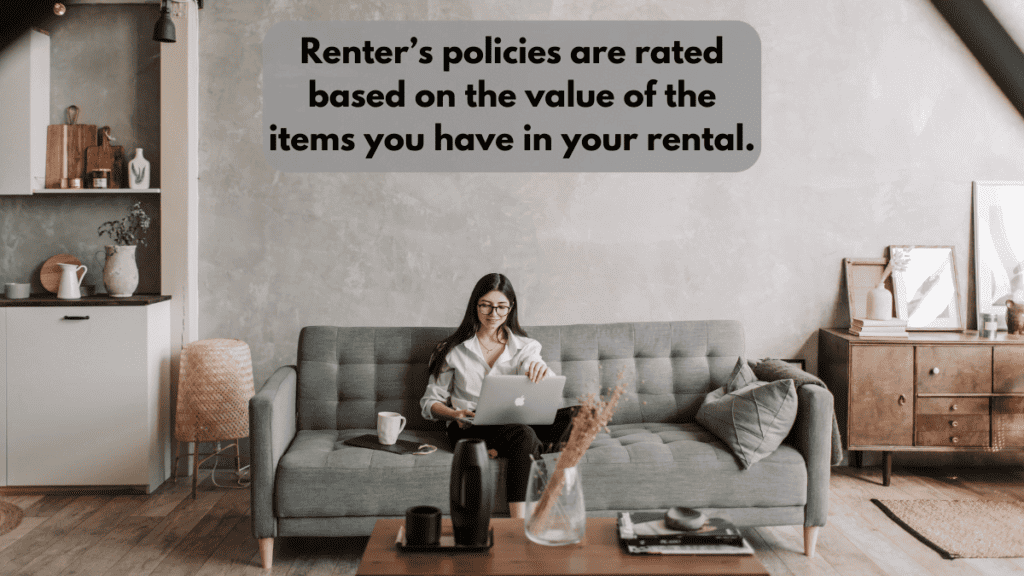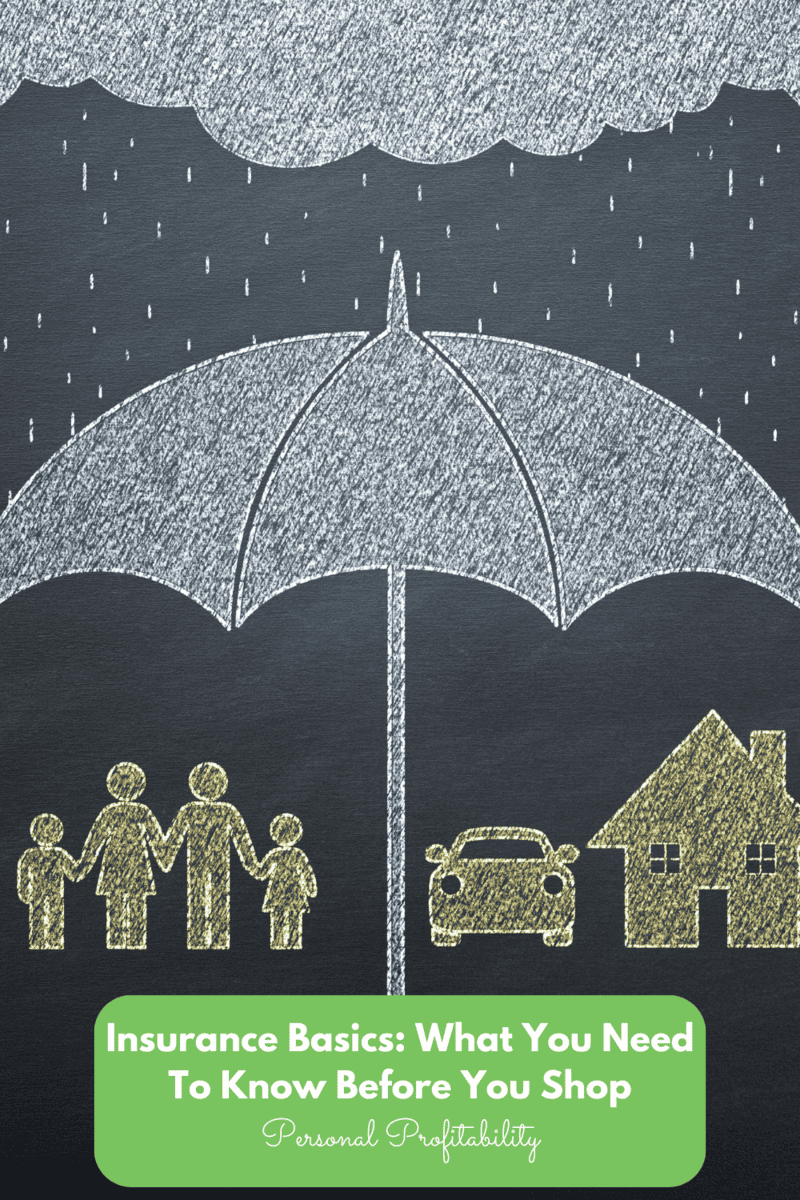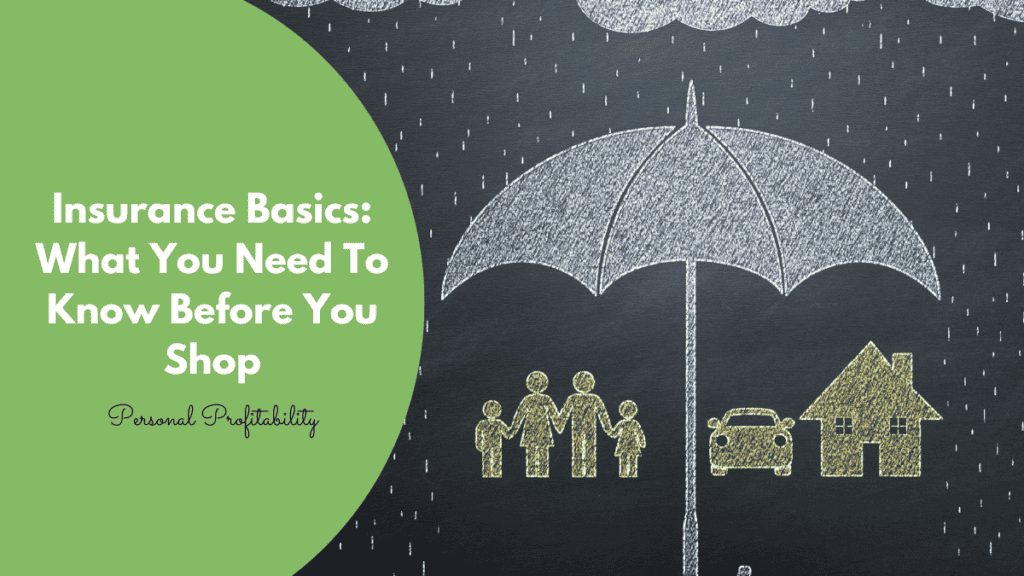Insurance is a complex topic, but it is critical to safeguarding your financial health. Knowing some basics about common coverages you may need and how your rates are determined can help you shop smarter when you search for policies.
Here are some key things to know before you start shopping for coverage.
Why You Need Insurance
If you care about your financial situation, which I bet all Personal Profitability readers do, you’ll likely appreciate that insurance offers a critical safety net for you, your belongings, and your finances.
Think about it this way: if you needed emergency surgery tomorrow, could you afford thousands of dollars in medical bills? Or if your home burned down, would you be able to pay to replace all your belongings? Could you afford repairs if you were in a car accident?
Insurance can offer you a lifeline if you experience a crisis that costs you more than you can afford or more than an emergency fund might cover.
Beyond that, insurance can ensure you don’t have to foot the entire bill for costs like these, even if you can afford them. When you can keep more of your money thanks to the help of insurance coverage, you can reach financial independence sooner.
Common Types of Insurance
While there are many different types of insurance products for both individuals and businesses, there are four types of insurance that are among the most commonly purchased policies across the country.
Health Insurance
Health insurance is easily one of the most important types of coverage people need. In fact, it is so important that in 2010, 219 United States House Representatives voted to bring long overdue reforms to the U.S. healthcare system.
These sweeping changes have included 30 million people who previously did not have coverage becoming insured, the term “pre-existing condition” becoming extinct, and everyone being covered, no matter what, by a health plan.
This coverage is essential to ensure you remain healthy by helping you pay for basic checkups, emergency room visits for accidents or illnesses, surgeries, and more.
Sometimes, health insurance will include dental and vision coverage. Other times, it might not. It’s essential to make sure you fully understand what your policy includes to ensure that you can get dental and vision coverage if needed.

Car Insurance
If you have a car, insurance is probably required by law. This coverage will protect your car, other cars, and anyone in those cars in case of an accident or vandalism.
For example, my car was vandalized once, and the cost of repairs was over $3,000. My deductible (the part I have to pay) was $250. Either way, it sucked, but I was protected for all costs over my deductible.
Accidents happen every day, and car insurance is a great way to protect your finances in the event one happens to you.
Renters Insurance
Many renters do not realize they need an insurance policy, and I highly recommend all renters get a policy. As a renter, you do not have the same worries as an owner, but you still need insurance. A renter’s policy insures all of your possessions that you keep inside your apartment.
If your building burns down, you don’t want to be out of luck with all of your furnishings and possessions. Your policy will cover everything you store in the unit. Your bed, furniture, clothes, electronics, and anything else you own will be covered by your policy with few exceptions.
A renter’s policy does not cover the building or anything attached to the building. Your structure, carpeting, built-in appliances, and walls are the responsibility of the owner to insure.
Homeowners Insurance
A home insurance policy for a house is the most comprehensive policy most people will ever need. This policy includes everything a renter’s policy covers, plus the structure and building elements.
A policy for a house will include the internal and external structure. If anything serious happens to your home, a single-family home policy should comprehensively cover you.
A home insurance policy does not generally include coverage for specified acts of nature, such as flooding or earthquakes. Purchasing supplemental coverage for those circumstances is critical if you live in an area prone to natural disasters.
How Insurance Rates Are Calculated
Many people do not understand the factors that impact their insurance rates, and there are some important things to know about in the unknown world of insurance premiums.
Health Insurance Rates
The health insurance industry is a beast, and premiums are generally costly. Rates are calculated using one of two methods.
If you work for a company, your employer will negotiate a blanket rate for its employees. This is based on factors such as the average age of employees, fitness levels, and so on. Your employer generally pays a portion of your monthly premium, and you pay the rest.
If you need to get your own health insurance, a formula is used to determine your individual plan rates. The major factors that impact your costs include your age, weight, family health history, your health history and pre-existing conditions, tobacco and alcohol use, past surgeries, and other major health risk factors.
Your deductible, maximum out-of-pocket costs, and the type of plan you choose (PPO, HMO, EPO, or POS) will also impact your rates.
Auto Insurance Rates
The auto insurance industry has extensively researched correlations between people and driving safety. The statistics are pretty solid, and the industry prices insurance based on your risk factors.
The major factors for auto coverage are your age, gender, driving history, marital status, credit score, home ZIP code, and your car’s make, model, and color.
For example, if you are a 17-year-old boy who has had several accidents, lives in a dangerous neighborhood, and drives a cherry red Mustang convertible, your rates will be higher than a 50-year-old married woman driving a 1980s station wagon with no accidents on her record.
The downside is that you could be a really safe 17-year-old boy and still get hit with high rates because other 17-year-old boys get into lots of accidents.
In addition, insurers will also adjust your rates based on your deductible and the coverage levels you need.

Renter Insurance Rates
Renter’s policies are rated based on the value of the items you have in your rental. Insurance companies also consider the location of the property you are renting, the construction and building style, the property size, the type of property, and specific policy exceptions.
Discuss this in detail with your insurance agent to make sure your coverage meets your needs.
Homeowner Insurance Rates
Generally, homeowner policies are bundled into mortgage payments, so you make one monthly payment. Property taxes are often included as well.
Many things go into the cost of your homeowner’s insurance policy. These can include things like the value of your home, the cost of the items in your house, your location, and more.
If you live in a neighborhood with high crime rates, your premiums will be higher than in a safe suburb. If you live in a wood frame house, your policy will cost more than a brick or steel-constructed building since these risk factors impact the likelihood of a loss or claim.
Work With an Agent and Company You Trust
The insurance world is complex. While your agent might seem like your friend today, the idea of an insurance company is to make a profit. To make a profit, they try to maximize what you pay in and minimize what they pay out.
Make sure you find a trustworthy, highly rated, well-regarded insurance agent and company. All insurers are not alike, so don’t expect the same treatment and service across the board.
Many people have horror stories about companies not paying for a claim. Others have stories about helpful agents walking them through the entire process. Read about the company you are considering when you are making a selection.
Sometimes, paying a little extra to ensure your insurer will have your back during the stressful process of filing a claim is worth it.
How Insurers Make Money
Back in the days of classes like Financial Institutions Management, I learned how insurance companies make money. I’ll never forget the gusto with which Dr. Gross derived complex profitability equations, but you don’t need calculus to understand how insurers turn a profit.
The two ways insurance companies drive their profits may not be entirely what you’d expect, but they are both worth understanding.
Maximum Premiums with Minimal Payouts
This profit strategy isn’t surprising. Minimizing payouts while taking in as much as possible in premiums is a major aspect of ensuring an insurance company’s success. Every time a customer files a claim, the company is at risk of paying out a substantial amount of money, which is why insurers fight payouts whenever possible.
The insurers know they will have to pay claims on occasion. For example, nearly every driver has been in an accident and filed a claim at some point. But even if a customer costs more than they pay, insurers still come out ahead because they diversify their risk pool.
Companies are willing to insure higher-risk individuals because lower-risk customers offset their risk. For example, if ten customers each pay $1,000 per year in insurance and two have claims that cost $2,000, the company still brings in $6,000 more than it pays out.
While you are a customer and your insurer wants to keep you happy, remember that paying a claim is never in their best interest. They are better off if another insurer has to pay or the claim is never paid at all!
Always stay on your toes and fight for your best outcome when dealing with a claim. If an insurer can deny a $1,000 claim, it has an extra $1,000 in its coffers. If that happens to 1,000 customers, they just kept $1 million in profits!

Investing for Maximal Profits
What happens if an insurance company pays out more in claims than it brings in? Major catastrophes like Hurricane Katrina, the 1994 Northridge Earthquake, and other major disasters can drain an insurer of more cash than it took in over a year or over many years.
Nevertheless, the companies continue to operate and earn a profit. That is possible thanks to investments, and large insurers have billions of dollars in cash to invest at any given time.
Some insurers make most of their money through investments. To earn a profit, they must maximize the return on investment in the time between receiving a premium and paying a claim.
The dollars the insurance company holds that it can invest today but expects to pay in the future is called “float.” If you pay the company $100 monthly from January to June and the insurance company pays a $600 claim in July, it has a six-month period to invest that $600 float for a profit.
Scale is very important to insurance company investments. With a large pool of customers, the company can keep a certain amount of cash on hand for projected payouts and invest the rest.
The Bottom Line
You can’t legally drive a car without insurance. Insurance is required when you get a home mortgage. You can’t live in America without health insurance unless you want to pay a tax penalty.
With insurance playing such a critical role in our personal finances, it is important to understand the different policies and rates as well as how insurance companies work. If you know the basics, insurance companies are a great partner to work with in your quest for personal profitability.


